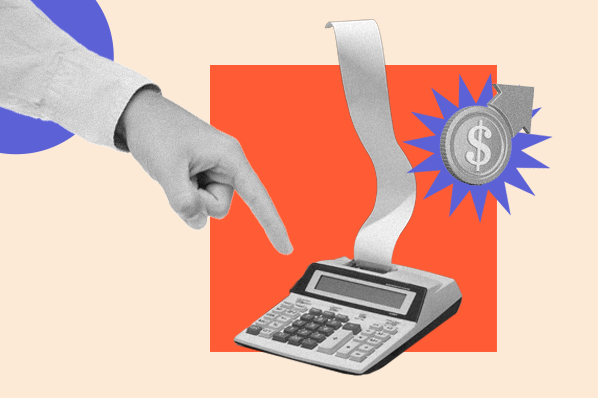Risky business. Great movie from the ’80s — but two words no lender, investor, or customer wants to hear.
The best companies know how to appeal to customers while also maintaining good profits.
Unfortunately, external factors and poor decisions can land your business in financial upheaval. The good news: There’s a way to reduce these obstacles by learning financial risk and how to mitigate it.
What is financial risk?
Financial risk is the chance of an investor or owner losing money in a business or investment. Losses can stem from lower revenues, higher costs, or both. Financial risk can also come from external factors, such as changes in the economy or political landscape (for example, pandemic-induced lockdowns).
Then there are owners who make poor business decisions, such as becoming:
- Highly dependent on one customer, which is a risk if that customer takes their business elsewhere
- Highly leveraged, which is a risk if interest rates rise
- Heavily invested in one industry, which is risky if that industry goes through a downturn
Without a plan to reduce financial risk, your business can quickly go downhill, causing layoffs, increased debt, or missed debt payments.
Not only does poor financial risk management impair your finances, but also it hurts your reputation among workers and potential partners or lenders.
By understanding financial risk, you can make better decisions about how to grow your business while minimizing the chances of financial losses.
Types of financial risk for businesses
There are five types of financial risk businesses should monitor and mitigate:
- Operational risk: This is the risk of losing money from errors or unforeseen events. For example, if your assembly line breaks down and you can’t produce products, you’ll lose revenue. To mitigate operational risk, have contingency plans in place, such as backups for your assembly line or raw materials.
- Credit risk: This is the risk of not getting paid by customers or borrowers — for example, if you extend a loan to a customer and they default on the payments. To reduce credit risk, you can require customers to provide collateral or take out insurance.
- Market risk: This is the risk of changes in the market affecting your business. For instance, if you’re a luxury bags retailer and there’s a recession, people may cut back on spending. To manage market risk, diversify your products and customer base.
- Liquidity risk: This is the risk of not being able to meet your financial obligations, such as loan payments or supplier payments, because you don’t have enough cash on hand. This can happen if you have too much debt or if your customers don’t pay on time. To mitigate liquidity risk, you set up a line of credit or an emergency fund.
- Legal risk: This is the risk of being sued or held liable for something. For example, if you’re a manufacturer and your product caused an injury, you could be held liable. To minimize legal risk, purchase insurance or create contracts that limit your liability.
Identifying financial risks
The first step to identifying financial risks is to understand what those risks are. Then, you can develop strategies to manage them. Some ways to do this:
- Review your financial statements: Identify all sources of income and expenses using spreadsheets or accounting software to see where you can cut costs (e.g., rent, utilities, inventory).
- Analyze business debts: Look at your balance sheet. Do you have enough cash to cover operating costs? How much do you owe in debt? What kind of debt (short-term vs. long-term) do you have? Make sure you’re up to date and aren’t on the verge of default or asset seizure.
- Identify operational weaknesses: Look at areas of your business that aren’t working well, such as slow production lines or low employee morale.
- Compare metrics with competitors: See how others in your industry are faring — is there a downward trend across the board, or is it just happening to you?
After identifying financial risks, it’s time to develop solutions. For example, you might decide to sell off unneeded equipment or hire more employees, if it benefits your business long term.
Be mindful that some risk is a good thing. For instance, taking on a large debt, such as a real estate loan to purchase a building, can aid expansion, which will help increase future revenue.
If you’re facing financial problems, get help from a certified public accountant (CPA), who will review your books and figure out how to fix your finances. A CPA can also advise you on how to set up your business structure to minimize your exposure to financial risks.
How to calculate financial risk
You can estimate financial risk using various formulas, depending on the type of risk you want to detect.
While an investor may want to understand the company’s profit margins, an executive might be more focused on ensuring the company’s operating costs are low.
Here are the most common ratios used to calculate financial risk:
- Contribution margin ratio: Measures how much each sale contributes to covering fixed costs. To calculate, take your contribution margin (sales - variable costs) and divide it by sales. The higher the contribution margin percentage, the less risky your business is.
Example: monthly sales = $1k, monthly variable costs = $500; therefore, the contribution margin is $500. The contribution margin ratio would be 50% ($500 / $1k = 0.5).
- Operating leverage effect (OLE) ratio: Measures how much revenue increases or decreases based on sales volume changes, so you can determine how much money you have left over to pay non-operating costs.
To calculate, take your contribution margin and divide it by the operating margin. The higher your OLE percentage, the more your profit potential.
Example: contribution margin = $1k, operating margin = $200. The OLE ratio would be 80% ([$1k - $200] / $1k = 0.8).
- Debt-to-equity ratio: Measures how much debt your company has compared to its equity. To calculate, take your total debt and divide it by your shareholder’s equity. A high debt-to-equity ratio means your business is riskier.
Example: total debt = $1k, shareholder’s equity = $500. The debt-to-equity ratio would be two (1k / 500). The closer to one, the better.
What is risk tolerance?
Risk tolerance is the amount of risk you’re willing to take on and whether you can afford the loss without shutting down your operations. This differs from business to business, since some people are more comfortable with risk than others.
Factors that affect risk tolerance are:
- The industry of the investment: Volatile industries like hospitality and food and beverage are higher risk, especially since supply chains and health concerns can shut down operations.
- The age of the company: Startups are often more risk tolerant because they’re trying to break into the market, while established businesses may be more risk averse because they want to maintain their current position.
- Your financial situation: If you’re in a strong financial position, you may be more willing to take on risk.
- Personal preferences: Some business owners are more risk averse than others due to their personality type or life circumstances.
When making business decisions, consider your risk tolerance by asking yourself how much you’re willing (and can afford) to lose. For example, if you’re considering a new product line, assess the odds of getting a return on investment and whether losing this investment will impact your ability to survive financially.
If the blow will cripple your company, then the risk is likely too high and not worth the reward.
Best methods for handling financial risk
There are several ways you can avoid financial risk:
- Have multiple sources of income: Create more than one revenue stream. If you’re running a laundromat, add vending machines, arcade games, or a service to wash, dry, fold, and deliver clothes.
- Build diversified portfolios: Have different investments, such as stocks, bonds, and real estate. This reduces risk because if one investment fails, the others may not.
- Create a risk management plan: This is a document that outlines your company’s approach to managing risk. It should include your company’s risk tolerance, policies, and procedures, so everyone’s on the same page.
- Buy the right amount of insurance: You don’t want to be underinsured and have to pay out of pocket for damages, but you also don't want to overspend on premiums. Find the right balance for your industry.
- Hire a risk management consultant: These professionals can help you identify, assess, and manage risk.
- Keep savings for business emergencies: Set aside six to 12 month’s worth of revenue to cover business expenses during a recession, pandemic, or other unforeseen event.
- Review your financial risk regularly: As your business changes, so do the risks. Review your risk management plan at least annually to make sure it’s still relevant.
Financial risk is an inherent part of doing business, but that doesn’t mean you have to accept it. Continue to assess your financial well-being and be innovative — there’s no one way to mitigate financial risk, so get creative and see what works.
What did you think of this article?
Business Acumen








![Business Ethics — Why They Matter and How Your Company Can Get it Right [+Expert Tips]](https://53.fs1.hubspotusercontent-na1.net/hubfs/53/business-ethics-1-20250224-5750570.webp)






